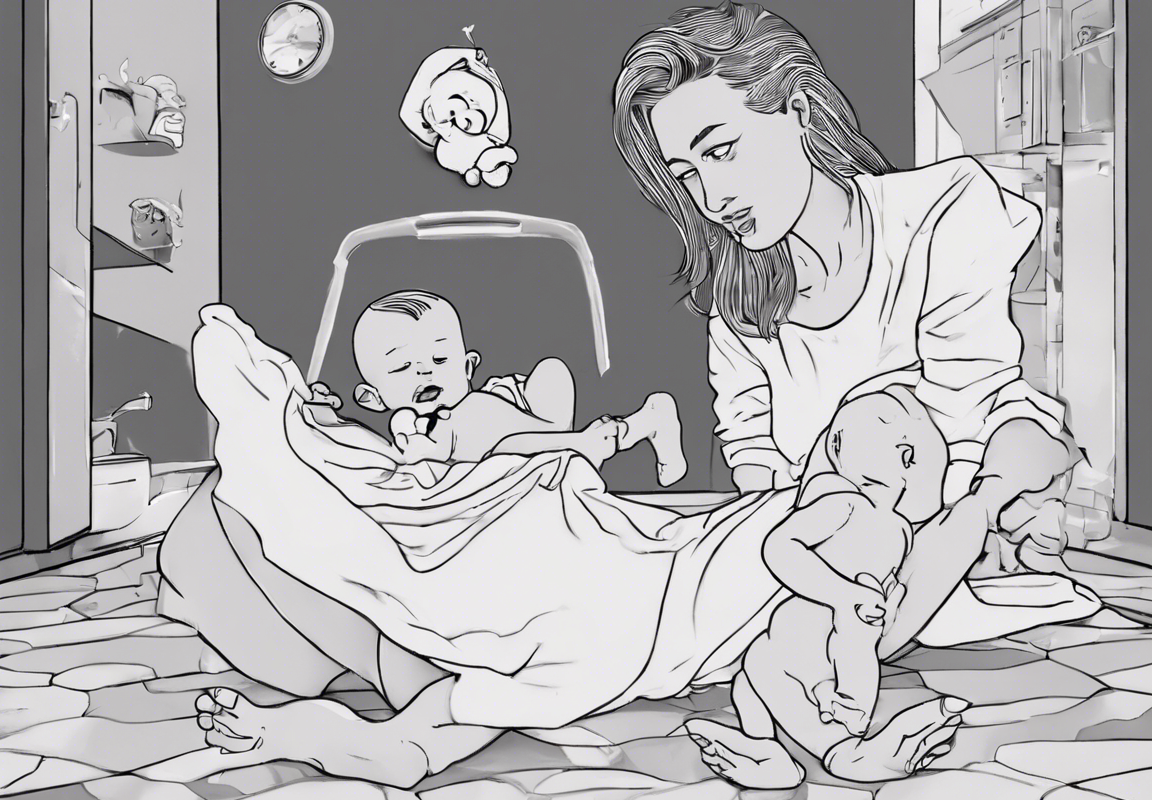Introduction
Discovering that the baby in a relationship isn’t biologically related to the assumed father can be a momentous and emotionally charged situation. This revelation may come about through genetic testing, ultrasound examinations, or physical discrepancies, leading to a series of complex emotions and decisions for all parties involved. In this comprehensive guide, we’ll delve into the intricacies surrounding this challenging scenario, providing insights, advice, and practical steps for navigating through the paternity mystery.
Understanding the Paternity Puzzle
Biological Paternity vs. Legal Paternity
Before delving into the implications of discovering that the baby isn’t genetically related to the assumed father, it’s crucial to differentiate between biological paternity and legal paternity. Biological paternity refers to the genetic relationship between a father and a child, determined through DNA testing. Legal paternity, on the other hand, pertains to the responsibilities and rights granted to a father under the law, which may or may not be influenced by genetic ties.
Common Scenarios
Several scenarios may lead to the revelation that the assumed father isn’t the biological parent of the child. These include:
- Infidelity: A common reason for paternity discrepancies is infidelity, where the mother had a relationship with another man during the conception window.
- Assisted Reproductive Technology: In cases where assisted reproductive technologies such as in vitro fertilization (IVF) or sperm donation are used, the biological father may not be the intended father.
- Misattributed Paternity: Misattributed paternity occurs when the assumed father is not the biological parent due to misinformation or misunderstanding.
- Adoption: In cases of adoption or blended families, the child may not be biologically related to the assumed father.
Emotional Impact
For the Assumed Father
Learning that the baby isn’t biologically related to the assumed father can evoke a range of emotions, including shock, betrayal, anger, sadness, and confusion. The sense of loss over the biological connection and the breach of trust can be overwhelming, leading to a profound identity crisis and a reevaluation of the relationship with both the mother and the child.
For the Mother
The mother may experience feelings of guilt, fear, and anxiety upon revealing the paternity mystery. Navigating the emotional fallout of disclosing the truth, managing potential repercussions within the relationship, and addressing the impact on the child’s future can be daunting tasks.
For the Child
Children caught in paternity mysteries may face identity issues, confusion about their origins, and strained relationships with parental figures. The disclosure of the truth, the reshaping of familial dynamics, and the establishment of new connections can significantly impact their emotional well-being and sense of self.
Navigating the Challenges
Communication is Key
Open, honest, and empathetic communication is essential in navigating the complexities of a paternity mystery. All involved parties should engage in respectful dialogues, express their emotions and concerns, and work towards understanding each other’s perspectives. Seeking the support of a therapist, counselor, or mediator can facilitate these conversations and foster constructive outcomes.
Genetic Testing
DNA testing is often the most accurate method for determining biological paternity. Various options, such as paternity tests conducted through buccal swabs or prenatal genetic testing during pregnancy, can provide conclusive evidence regarding the child’s biological father. Understanding the process, ensuring confidentiality, and interpreting the results with professional guidance are crucial steps in utilizing genetic testing.
Legal Considerations
Seeking legal advice is advisable, especially when paternity discrepancies have legal implications, such as custody, support, or inheritance rights. Consulting with a family law attorney can clarify the relevant statutes, rights, and responsibilities, guiding the parties towards informed decisions and amicable resolutions.
Moving Forward
Establishing New Dynamics
Upon uncovering the paternity mystery, recalibrating familial dynamics and relationships becomes paramount. Redefining roles, fostering bonds based on love and commitment rather than biology, and nurturing transparent communication can pave the way for a harmonious future for all parties involved.
Counseling and Support
Individual counseling, couples therapy, or family counseling can offer valuable emotional support and guidance in processing the implications of the paternity revelation. Addressing feelings of grief, betrayal, guilt, and uncertainty in a safe and confidential space can aid in healing and fostering resilience within the family unit.
Parenting Together
Regardless of biological ties, co-parenting harmoniously is essential for the well-being of the child. Collaborating on parenting decisions, maintaining consistency in routines and discipline, and prioritizing the child’s best interests can transcend genetic boundaries and create a stable and nurturing environment.
FAQ Section
1. How common are paternity discrepancies in relationships?
Paternity discrepancies, while not widespread, do occur in a notable percentage of cases, attributed to various factors such as infidelity, assisted reproductive technologies, and misattributed paternity.
2. Can paternity testing be done without the knowledge of the parties involved?
While covert paternity testing is possible, ethical concerns regarding consent, privacy, and legal implications surround such practices. It’s advisable to seek professional guidance and adhere to legal protocols when conducting paternity tests.
3. What rights does the biological father have in cases of paternity discrepancies?
The legal rights of the biological father in paternity discrepancies vary based on jurisdiction, the presence of a legal acknowledgment of paternity, and custodial arrangements. Consulting with a family law attorney can provide clarity on the rights and responsibilities of all parties involved.
4. How does the revelation of paternity discrepancies impact child support obligations?
In cases where paternity discrepancies are confirmed, child support obligations may be affected, necessitating legal review and potential adjustments based on the child’s biological father and existing legal obligations.
5. What emotional support resources are available for families facing paternity mysteries?
Families navigating paternity mysteries can access a range of emotional support resources, including counseling services, support groups, online forums, and mental health professionals specializing in family dynamics and relationships.
Conclusion
Unraveling the paternity mystery when the baby isn’t genetically related to the assumed father is a complex and emotionally charged journey, requiring compassion, communication, and informed decision-making. By understanding the nuances of biological vs. legal paternity, acknowledging the emotional impact on all parties involved, and fostering transparent dialogues and supportive networks, families can navigate this challenging terrain with resilience and grace. Embracing new dynamics, seeking professional guidance, and prioritizing the well-being of the child can lead to healing, growth, and the forging of enduring familial bonds, transcending biological ties.






